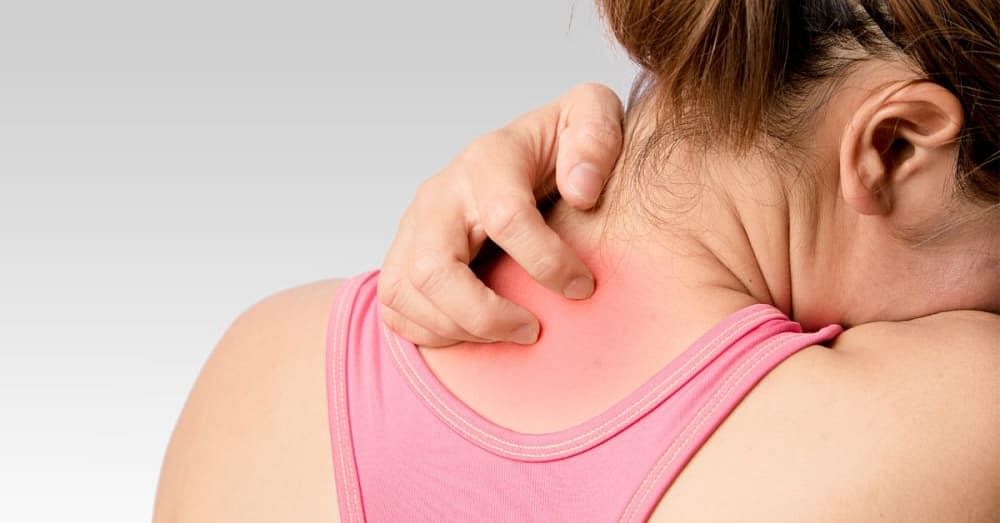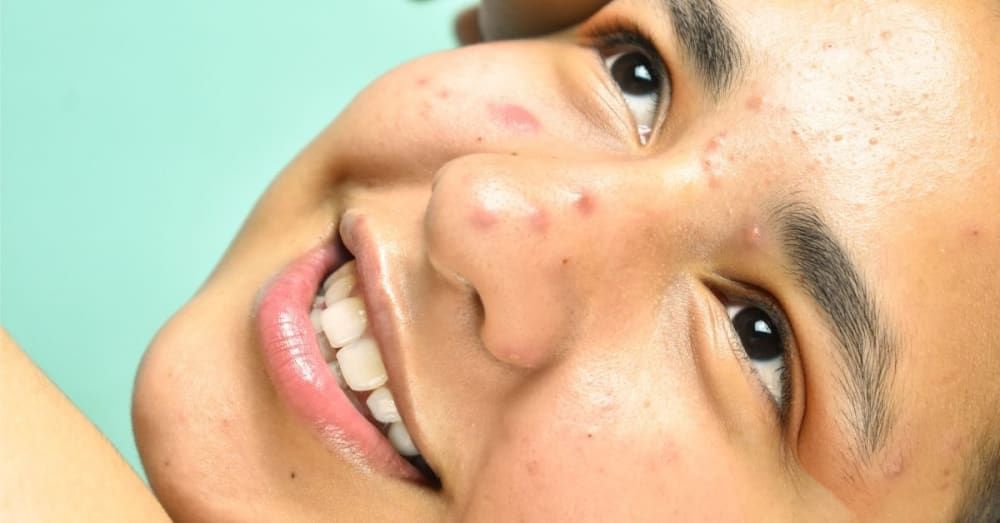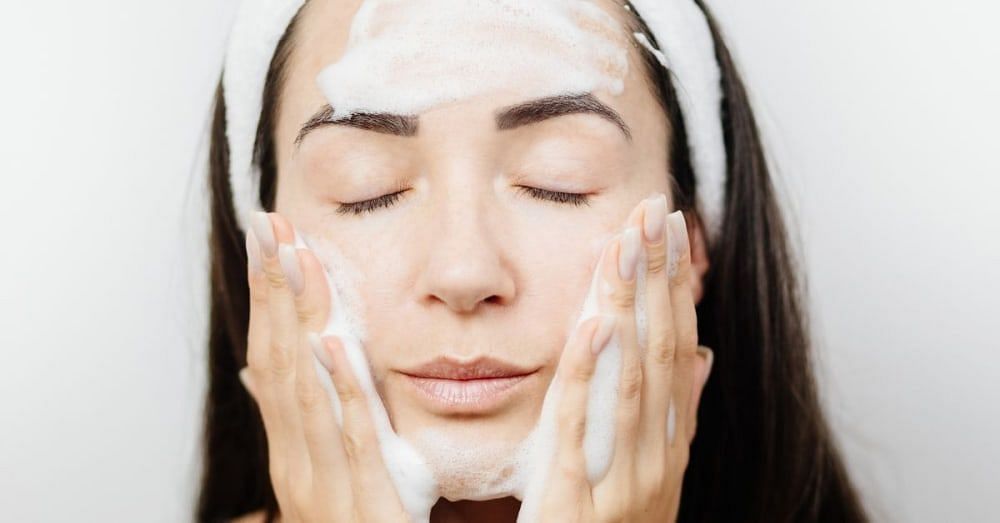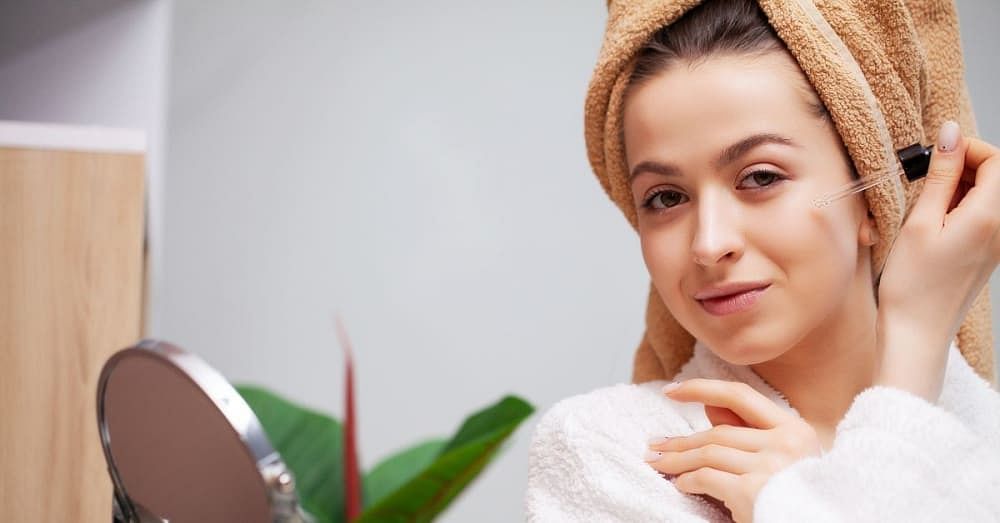Pimples are one of the most common skin conditions in the world, affecting up to 85% of young adults.
Traditional pimple treatments, such as salicylic acid, niacinamide, or benzoyl peroxide, have been shown to be the most effective. Still, they can be costly and have undesirable side effects, such as dryness, redness, and irritation.
Many people have turned to home remedies to treat pimples. In fact, according to a 2017 study, 77% of acne patients had tried alternative acne treatments.
Many home remedies lack scientific support, and more research on their efficacy is required. However, if you are looking for alternative treatments, options are still available.
This article explores 10 popular home remedies for pimples for oily skin.
1. Honey and Cinnamon Mask
According to a 2017 study, the combination of honey and cinnamon bark extract had antibacterial effects against P. acnes.
According to 2020 research, honey can inhibit or kill the growth of P. acnes on its own. This finding, however, does not necessarily imply that honey is an effective acne treatment.
According to a 2016 study of 136 acne patients, applying honey to the skin after using antibacterial soap was no more effective at treating acne than using the soap alone.
While honey and cinnamon's anti-inflammatory and antibacterial properties may help with acne, more research is needed.
How to use:
- Mix 2 tablespoons of honey and 1 teaspoon of cinnamon to form a paste.
- Apply the mask to your face after cleansing and leave it on for 10 to 15 minutes.
- Rinse the mask thoroughly and pat your face dry.
2. Tea Tree oil
Tea tree oil is an essential oil derived from the leaves of Melaleuca alternifolia, a small Australian tree.
According to a 2018 study, applying tea tree oil to the skin may help reduce acne.
In a small 2019 study, participants using a tea tree oil ointment for acne experienced less dry skin and irritation when compared to benzoyl peroxide. They were also happier with the treatment.
According to a 2017 study, tea tree oil may be an effective alternative to topical and oral antibiotics, which can cause bacterial resistance if used for an extended period of time.
Tea tree oil is highly concentrated, so dilute it before applying it to your skin.
How to use:
- Mix 1 part tea tree oil with 9 parts water.
- Apply the mixture to the affected areas with a cotton swab.
- If desired, apply moisturiser.
- As needed, repeat this process 1 to 2 times per day.
3. Green Tea Face Mask
Green tea is very high in antioxidants, and drinking it can promote good health. It may also help reduce acne.
According to a 2017 study, this is likely due to the polyphenols in green tea, which help fight bacteria and reduce inflammation, both of which are major causes of acne.
In a small 2016 study, 80 women took 1,500 mg of green tea extract daily for four weeks. Women who took the extract had less acne on their noses, chins, and around their mouths by the end of the study.
Applying green tea to the skin may also be beneficial.
According to a 2020 study, applying green tea extract to the skin significantly reduces sebum production and pimples in acne sufferers.
You can purchase green tea creams and lotions, but you can also make them yourself.
How to use:
- Steep green tea in boiling water for 3 to 4 minutes.
- Allow the brewed tea to cool.
- Apply the tea to your skin with a cotton ball or spritz it on with a spray bottle.
- Allow it to dry before rinsing with water and patting your skin dry.
4. Aloe Vera
Aloe vera is a tropical plant that produces a clear gel from its leaves. Lotions, creams, ointments, and soaps frequently contain the gel.
It's commonly used to treat abrasions, rashes, burns, wounds, and skin inflammation, according to 2018 research.
Aloe vera contains salicylic acid and sulphur, both of which are commonly used to treat acne. According to a 2017 study, applying salicylic acid to the skin reduces acne.
According to a 2018 study, when combined with other ingredients such as tretinoin cream or tea tree oil, aloe vera gel may help with acne.
How to use:
- Using a spoon, scrape the gel from the aloe plant.
- As a moisturiser, apply the gel directly to clean skin.
- Repeat 1–2 times daily, or as desired.
You can also buy aloe vera gel from the store, but make sure it’s pure aloe without any added ingredients.
5. Apply apple cider vinegar
Apple cider vinegar is made by fermenting apple cider, or the unfiltered juice from pressed apples.
Like other vinegar, research has found it to be effective against a wide range of bacteria and fungi.
Citric acid, for example, is found in apple cider vinegar. Citric acid has been shown in 2016 research to kill P. acnes when combined with zinc oxide.
According to 2017 research, the lactic acid in apple cider vinegar may also help to reduce the appearance of acne scars.
How to use:
- Mix 1 part apple cider vinegar and 3 parts water (use more water for sensitive skin).
- After cleansing, apply the mixture to the skin gently with a cotton ball.
- Allow it to sit for 5 to 20 seconds before rinsing with water and patting dry.
- As needed, repeat this process 1 to 2 times per day.
It’s important to note that applying apple cider vinegar to your skin can cause burns and irritation, and most dermatologists wouldn’t recommend it. If you choose to try it, use it in small amounts and dilute it with water.
6. Tomatoes
Tomatoes contain salicylic acid, which is a popular acne home remedy. Tomato acids may aid in the absorption of excess skin oils and the unclogging of pores.
How to use:
- Combine 1 teaspoon sugar with the pulp of 1 tomato.
- Apply to the skin in a circular motion.
- Apply the mask for 5 minutes.
- Rinse well with warm water and pat dry.
You can also apply just tomato pulp or tomato slices to your skin.
7. Almonds
You can use ground almonds to exfoliate your skin and soak up excess oil and impurities.
How to use:
- Finely grind raw almonds to make 3 teaspoons.
- Mix in 2 tablespoons of raw honey.
- Apply gently in circular motions to your face.
- Pat dry after rinsing with warm water.
You can also make an almond face mask by pulverising the almonds before adding the honey. Apply the mask for 10-15 minutes. Pat dry after rinsing with warm water. If you are allergic to nuts, do not use them.
8. Egg whites and lemons
Egg whites and lemons are a folk remedy for oily skin. Both ingredients are thought to help with pore tightening. The acid in lemons and other citrus fruits may aid in oil absorption. Lemons have antibacterial properties, according to a 2008 study.
How to use:
- Combine 1 egg white with 1 teaspoon of freshly-squeezed lemon juice.
- Apply it to your face and leave it on for 10 minutes.
- Remove and pat dry with warm water.
9. Oatmeal
Oatmeal soothes irritated skin and absorbs excess oil. It also aids in the exfoliation of dead skin. When oatmeal is used in facial masks, it is usually ground. It goes well with yoghurt, honey, or mashed fruit like bananas, apples, or papaya.
How to use:
- Make a paste with 1/2 cup ground oats and hot water.
- 1 tablespoon honey, stirred in
- For about three minutes, massage the oatmeal mixture into your face; rinse with warm water and pat dry.
- Alternatively, apply the oatmeal mixture to your face and leave it on for 10-15 minutes before rinsing and patting dry with warm water.
10. Cosmetic clay
Cosmetic clays, also known as healing clays, are used to absorb skin oil and treat a variety of skin conditions. Because it is highly absorbent, French green clay is a popular treatment for oily skin and acne. French green clay is available in powder form.
How to use:
- Add about a teaspoon of clay to filtered water or rose water until it reaches a pudding-like consistency.
- Apply the clay mixture to your face and leave it on for a few minutes to dry.
- Warm water should be used to remove the clay, and it should be patted dry.
- Clay masks that are removed with water are gentler on the skin than peel-off masks.
References
V Mazzarello, December 2018; Treatment of acne with a combination of propolis, tea tree oil, and Aloe vera compared to erythromycin cream: two double-blind investigations - https://www.ncbi.nlm.nih.gov/pmc/articles/PMC6298394/
P.HLu, April 2016; Does supplementation with green tea extract improve acne in post-adolescent women? A randomized, double-blind, and placebo-controlled clinical trial - https://www.sciencedirect.com/science/article/abs/pii/S0965229916300280?via%3Dihub
Georgios Kontos christopoulos, April 2017; Chemical peels in active acne and acne scars - https://www.sciencedirect.com/science/article/abs/pii/S0738081X16302723
J. Y. Bae, March 2016; Evaluation of anti-microbial activities of ZnO, citric acid and a mixture of both against Propionibacterium acnes - https://onlinelibrary.wiley.com/doi/10.1111/ics.12318
Ahmad Khalid Aalemi, July 2019; Dairy consumption and acne: a case control study in Kabul, Afghanistan - https://www.ncbi.nlm.nih.gov/pmc/articles/PMC6611707/
Suzana Saric, March 2017; Green Tea and Other Tea Polyphenols: Effects on Sebum Production and Acne Vulgaris - https://www.ncbi.nlm.nih.gov/pmc/articles/PMC5384166/
Reuven Rasooly, November 2019; In-Vitro Inhibition of Staphylococcal Pathogenesis by Witch-Hazel and Green Tea Extracts - https://www.ncbi.nlm.nih.gov/pmc/articles/PMC6963777/
Over-the-counter treatment of acne - http://sapajournal.co.za/index.php/SAPA/article/view/940











